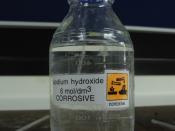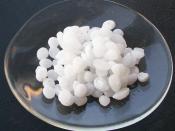Partner #1 Name: Alice Park
Partner #2 Name: Garret Kern
Partner #3 Name: Sherry Fan
Date: March 12, 2014
Course Title: Magnet Chemistry
Course Teacher: Mr. Lodal
Block: C and Period: 6
Lab Experiment #2 ~ Molarity Calculations
Purpose
The purpose of this experiment was to determine the concentration of a solution using analytical chemistry. The purpose of this particular experiment was ultimately to determine the concentration of acetic acid in vinegar. This experiment gave students the opportunity to determine the chemical property of a solution in an experiment similar to the experiments performed by real-world scientists.
Introduction
A solution is a homogenous mixture of two or more substances. A solution is formed when one substance known as a solute dissolves into another substance known as a solvent as a result of a chemical reaction between the two substances. One important property of a solution is the concentration of the solution.
There are multiple ways that the concentration of a solution can be measured. The most common measurement of the concentration of a solution is known as molarity. The molarity of a solution is defined as the number of moles of a solute in one liter of a solution. Another common measurement of the concentration of a solution is known as mass percentage. The mass percentage of a solution is defined as the ratio of the mass of a solute to the mass of a solution. The mass percentage of a solution is expressed as a percentage. This experiment will determine the concentration of a solution in mass percentage. The purpose of this experiment is to determine the concentration of acetic acid in vinegar. In the experiment, two solutions, sodium hydroxide in water and vinegar, will chemically react. Vinegar is a solution that consists of water,


